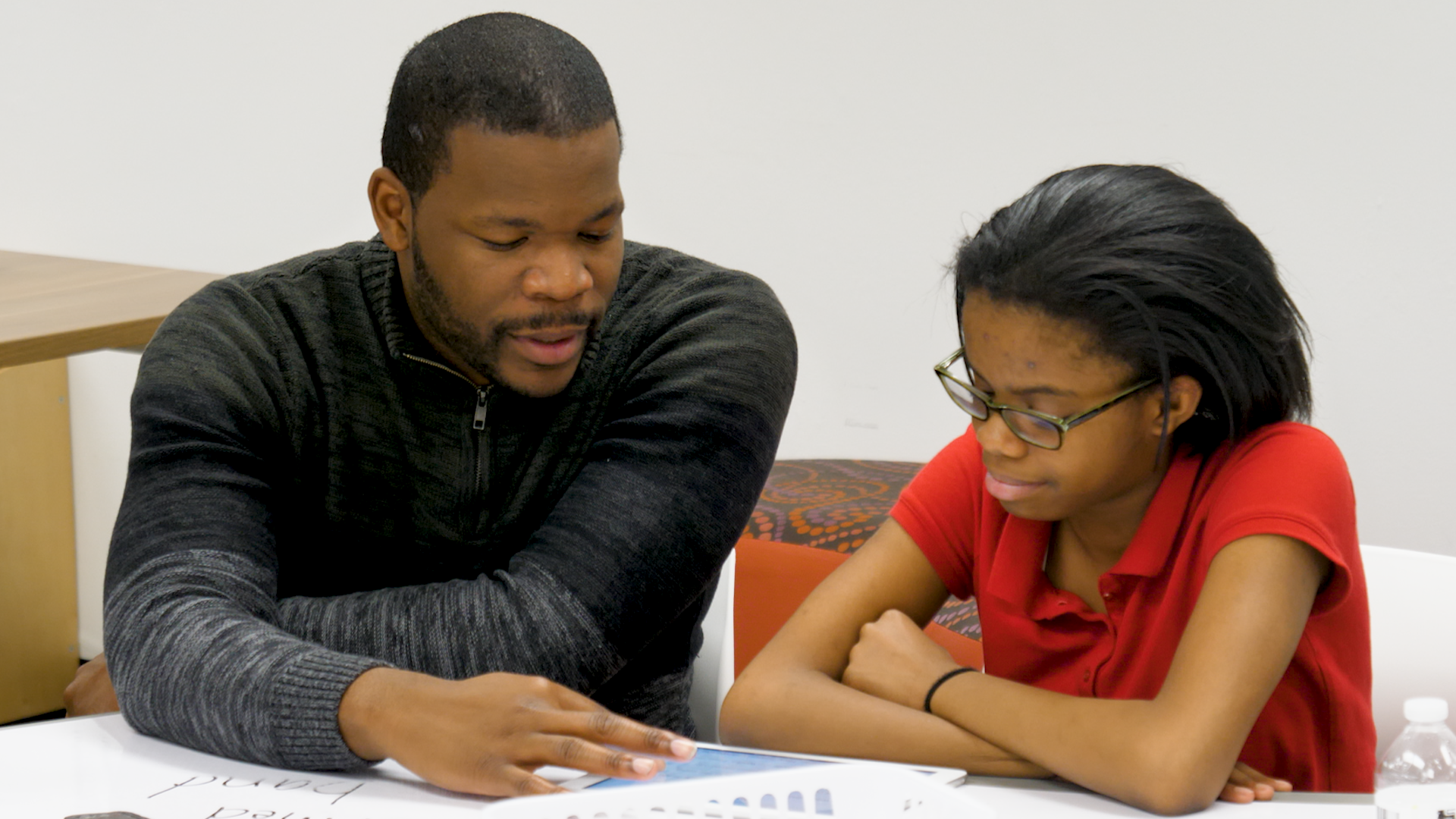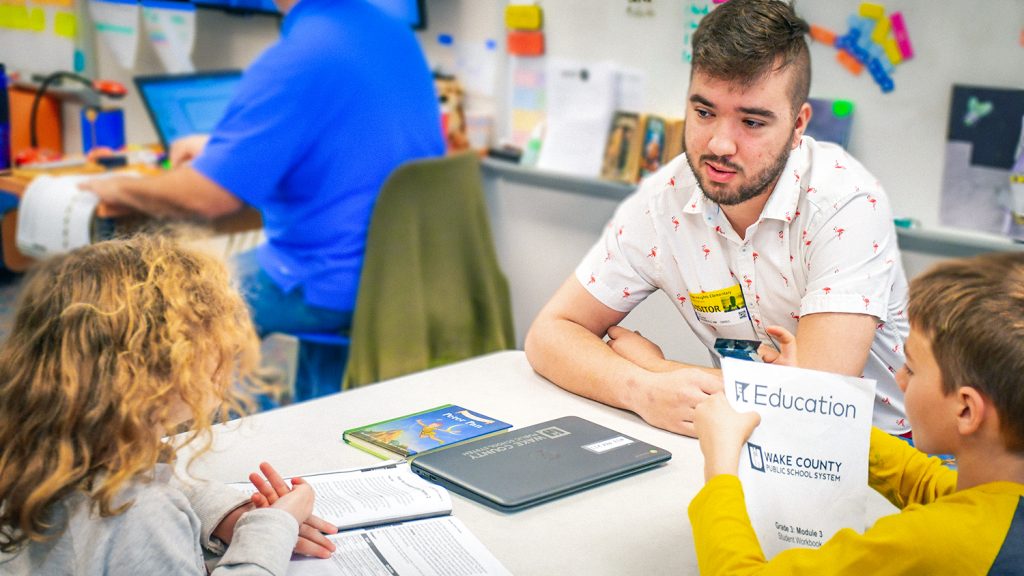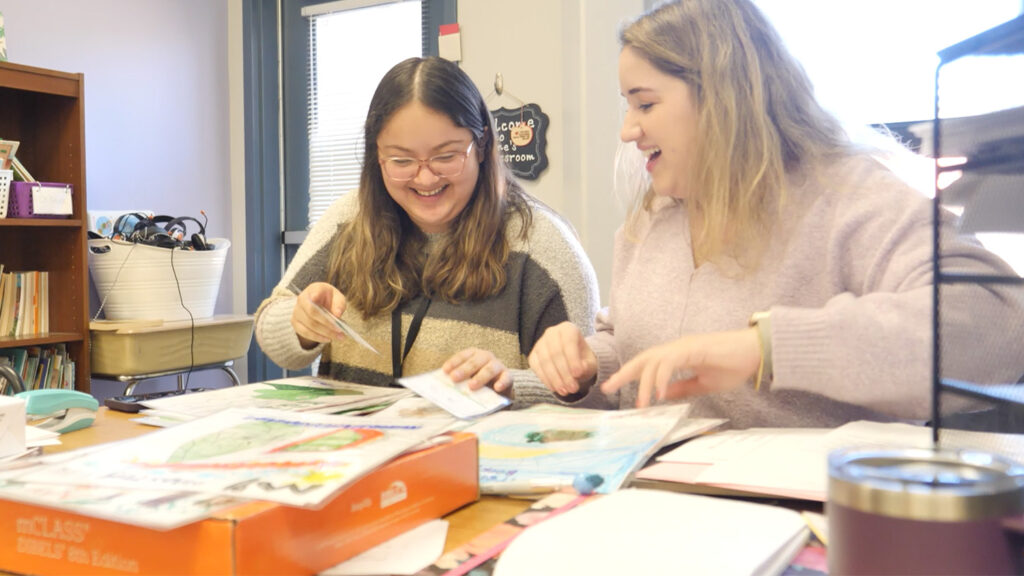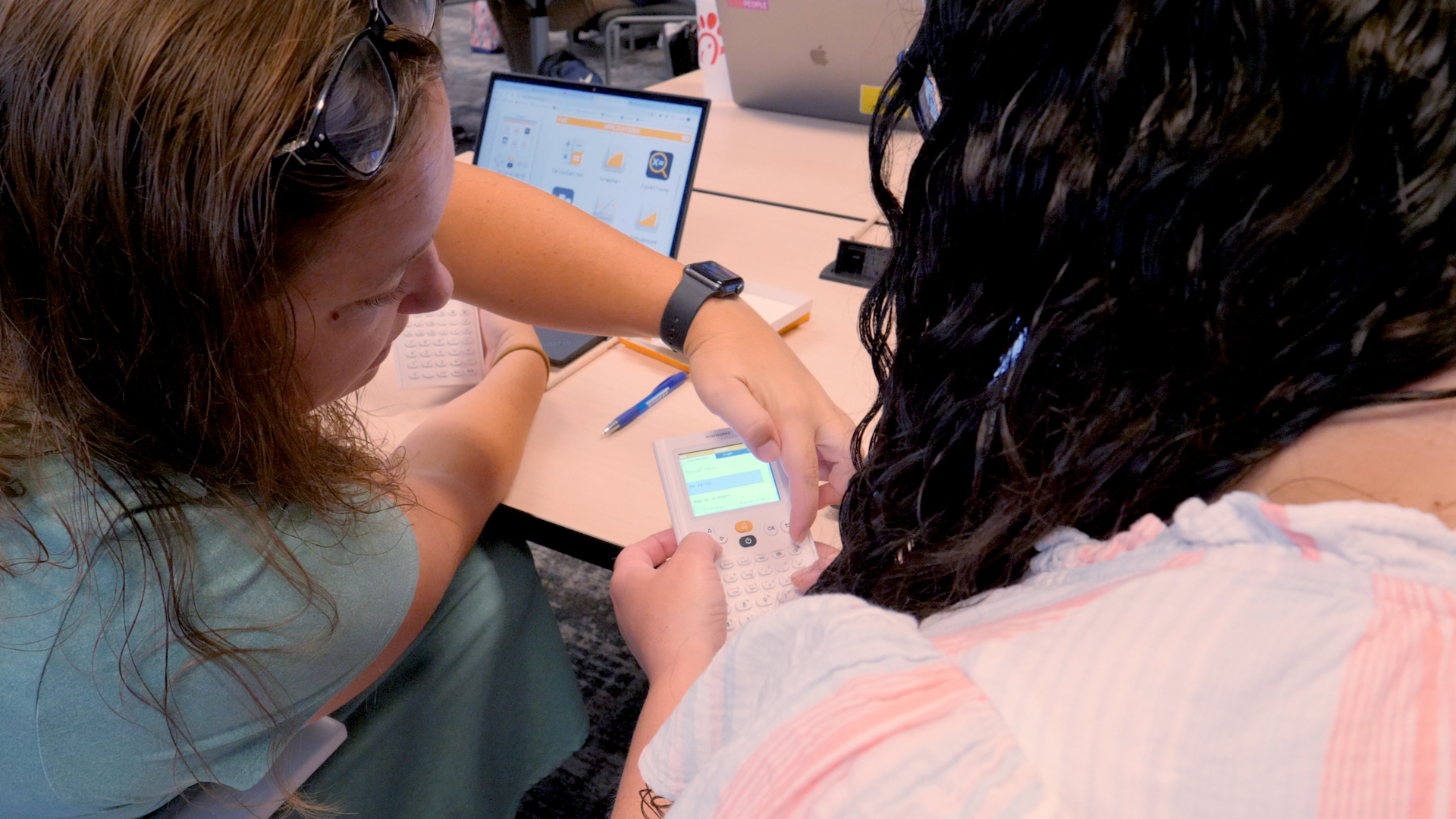Literacy Leaders
How NC State’s College of Education Aligns Coursework and Field Experiences to Prepare Effective Elementary Education Teachers Equipped to Address Early Literacy Needs

A strong teacher of reading sets the foundation for their students, not just for reading but also for writing, social studies, science and math. “If a student doesn’t know how to read, a student’s not going to succeed,” says Alondra Badillo-Reyes, an elementary education major at NC State’s College of Education and a student teacher at Reedy Creek Elementary School.
Wanting all students to succeed is why Badillo-Ryes plans to become a teacher — and ensuring she’s the most effective teacher possible for them is why she chose to attend NC State’s College of Education. Here, she says, she knew she would receive the preparation she needed to develop strong teaching and reading foundational skills that help students succeed. That preparation includes rigorous coursework aligned with field experiences focused specifically on reading. “Knowing that I was gonna be able to be more in the classroom and receive more [field] experiences was one of the main reasons I chose NC State’s College of Education,” she said.
NC State’s College of Education has a history of preparing elementary teachers who are effective literacy instructors:
- Collectively, between 2015 to 2020, NC State alumni were the highest percentage among alumni of all UNC System universities who met or exceeded expected growth in early literacy.
- One hundred percent of beginning teachers with an elementary education license from NC State met or exceeded growth in early literacy in 2020.
- NC State elementary education graduates receive the highest ratings on employer satisfaction surveys among public colleges in the state.
- NC State elementary education graduates report the highest satisfaction in their preparation.
Preparing teachers equipped to help their students succeed is important because less than half of third-graders are considered proficient in reading according to data the N.C. Department of Public Instruction released last year.
“This is a critical problem, and we are working hard to be part of the solution,” said Associate Professor of Literacy Education Jill Grifenhagen. “When students graduate from our elementary education program and begin teaching in their own classroom, we want them to be ready to hit the ground running and ensure that all their students are learning what they need to learn.”
Laying the Foundations Through Coursework and Field Experiences

NC State’s elementary education students are prepared to build strong foundations in literacy teaching by taking three methods courses specific to literacy that also align with field experiences:
In the fall of their junior year, elementary education majors enroll in ELM 330: Teaching Reading in the Elementary School Grades K-2, which focuses heavily on learning to teach foundational skills like phonological awareness and phonics. At the same time, they are placed in a kindergarten, first-grade or second-grade classroom, where they have opportunities to observe, support and lead instruction. During this time, they’re able to teach lessons related to phonological awareness, phonemic awareness, phonics blending and segmenting, comprehension and vocabulary, and fluency. They also implement literacy assessments and engage in case study lessons aligned with specific students’ literacy needs.
In the spring of their junior year, elementary education majors enroll in ELM 335: Teaching Reading in the Elementary School Grades 3-5, which builds upon what they’ve previously learned and focuses on upper-grade skills such as reading comprehension, fluency and vocabulary. At the same time, they are placed in a third-, fourth- or fifth-grade classroom to observe, support and lead lessons. In addition to implementing lessons related to phonics, fluency, comprehension and vocabulary, students have the opportunity to design and implement literacy assessments and engage in case studies with reading assessment data from the third grade end-of-grade exams and programs like mCLASS and Dibels NEXT.
During this time, students also take ELM 430: Teaching Language Arts in Elementary School, which focuses on academic language, writing instruction and other areas of literacy instruction.
These experiences build up to their senior year, when they student-teach full time.
“Our students are in field placements with master teachers who are experienced and are modeling excellent literacy instruction. They get to see their mentor teacher using strong literacy practices, and they get to practice implementing research-based reading and writing methods they’re learning in their classes,” Grifenhagen said.
Faculty also work closely with supervisors who coach elementary education majors in the field to ensure they understand the research-based practices that are taught in the classroom, so they can support and give feedback to pre-service teachers as they implement what they’ve learned in real classrooms.
“Having those hands-on activities and opportunities from my mentor teachers to allow me to teach a lesson have really prepared me for student teaching currently,” said Badillo-Reyes. “I can’t imagine a world coming into student teaching and not having that past [field] experience.”
To further integrate literacy and content-area instruction, literacy faculty in elementary education collaborate with faculty focused on elementary mathematics and science to ensure students receive practice in content-related literacy across all their coursework. This gives students the skills and experiences to apply literacy concepts across the disciplines.
“In all of my classes, the importance of teaching literacy as a base foundation has been stressed,” said Lara Cate Wright, a junior elementary education major.
Modeling Effective Teaching

Literacy faculty in the College of Education bring their own years of experience as elementary school teachers into the classroom as they prepare future educators. They model best practices and draw on their own research and evidence-based best practices to demonstrate effective literacy instruction to their students, who are able to immediately apply what they learn in their field experiences.
In one of her reading methods courses, for example, Wright was learning about syllable segmentation when a professor asked the class of pre-service teachers to clap out each syllable of the word “tomato.” Wright said she felt a little silly doing it in class; but later, when she tried the same approach with a class of first-graders, they loved the activity and they quickly picked up syllable segmentation. “Through my field experiences I’ve learned how to become a stronger teacher of reading through our lessons that we do in class and then [modify] and teach in the field,” Wright said.
Assistant Teaching Professor Jill Jones often begins her classes with a read-aloud of an elementary-level book so pre-service teachers can understand the importance of that practice and learn about diverse examples of children’s literature.
“[Modeling] really allowed us to see exactly how you should be teaching literacy to [elementary] students and it made us…think about it through their lens,” Emma Jones, a senior elementary education major and student teacher at Reedy Creek Elementary School, said. “It was nice to see how our professors teach it and then actually be able to go in the field experiences and implement it with actual students.”
In addition to modeling best practices and aligning coursework closely with field experiences, Grifenhagen said faculty are always continually improving their lessons to ensure they’re infused with the latest research-based methods and with what is happening at the state-level.
All in-service elementary school teachers in North Carolina complete LETRS (Language Essentials for Teachers of Reading and Spelling) training focused on teaching elementary literacy, for example. College of Education faculty members who study early literacy have also gone through the training to further align their lessons with what students will see and hear in schools. “Having that alignment and that connection to public schools across the state is really important to the work that we’re doing,” Grifenhagen said.
Putting Skills into Practice

In her student teaching classroom at Reedy Creek, Badillo-Reyes noticed that several students were struggling with reading comprehension. She looked at the assessment data with her mentor teacher, Christina Chase Lane ’18, who received Wake County Public School System’s 2018-19 Diane Kent-Parker First-Year Teacher Award.
Badillo-Reyes and Lane realized that while many of their third-grade students could read the words of the texts they were assigned, those students were not understanding the meaning and could not retell the story in their own words.
To address this, Badillo-Reyes worked with Lane to develop a small-group activity where a student has 45 seconds to retell a story and then cut their retelling down even further to get to the core meaning of the text.
“The College of Education has really shown us how to prepare a lesson but also to be able to provide it and differentiate it for different students, so it has really helped me be able to provide stronger literacy lessons that will reach all students,” Badillo-Reyes said.
Mentoring future teachers is a full-circle moment for Lane, who currently teaches in the same classroom where she student taught as a pre-service teacher in the College of Education and continues to draw on the lessons she learned as a student herself.
“My field experiences definitely shaped the teacher that I am today. Most of what I do in the classroom and how I do it comes from the experiences and what I was taught by my professors [at the College of Education] and my own cooperating teacher,” Lane said.
- Categories:


